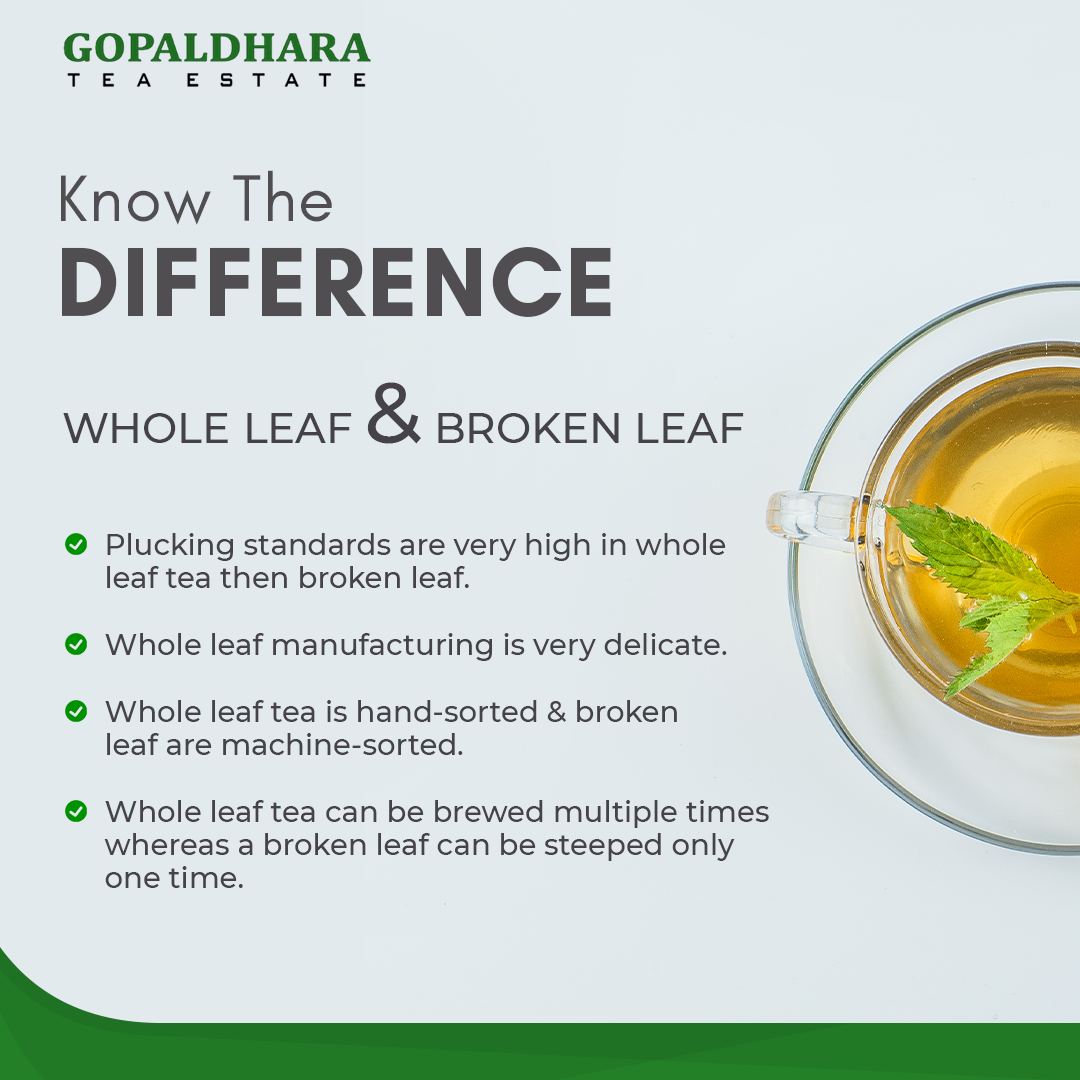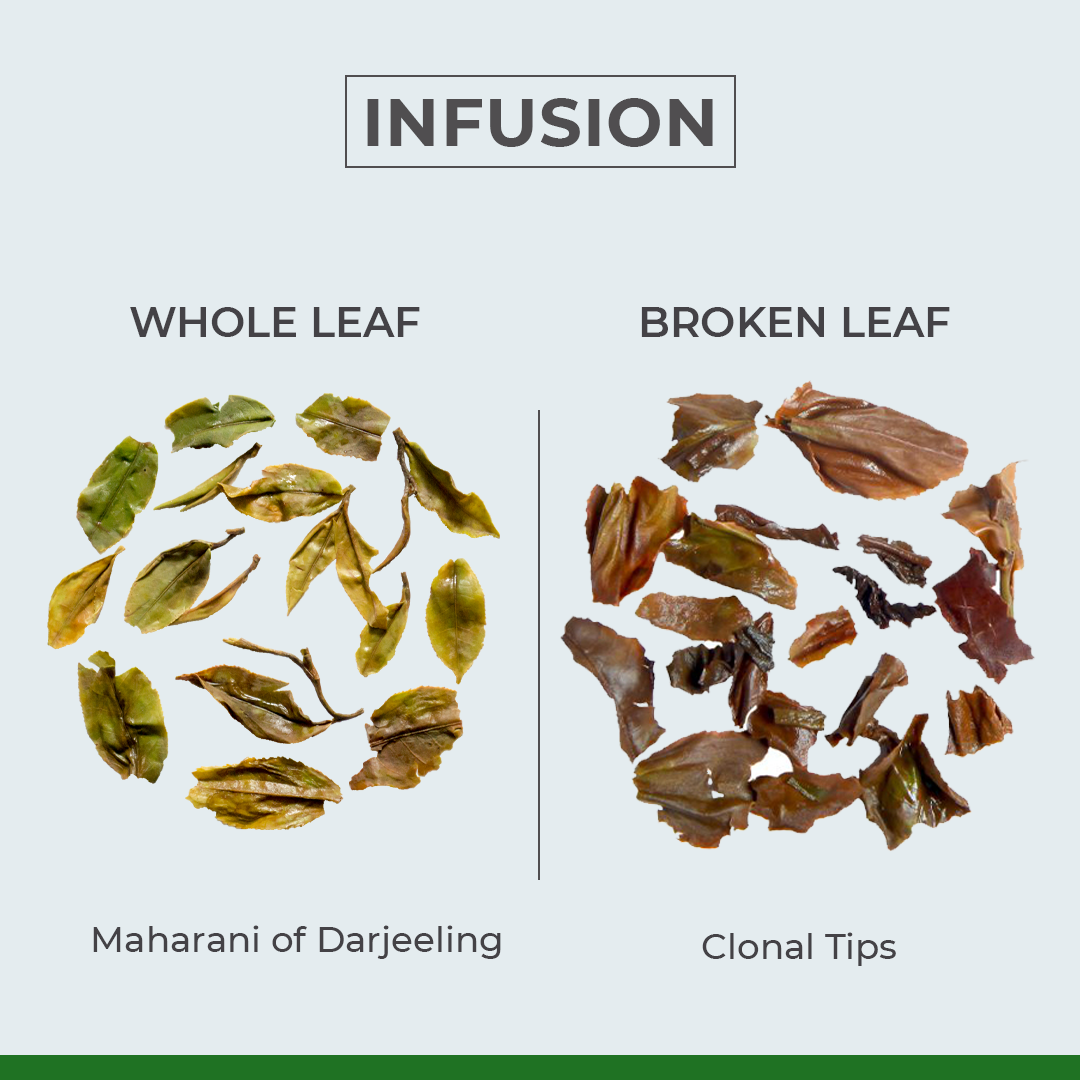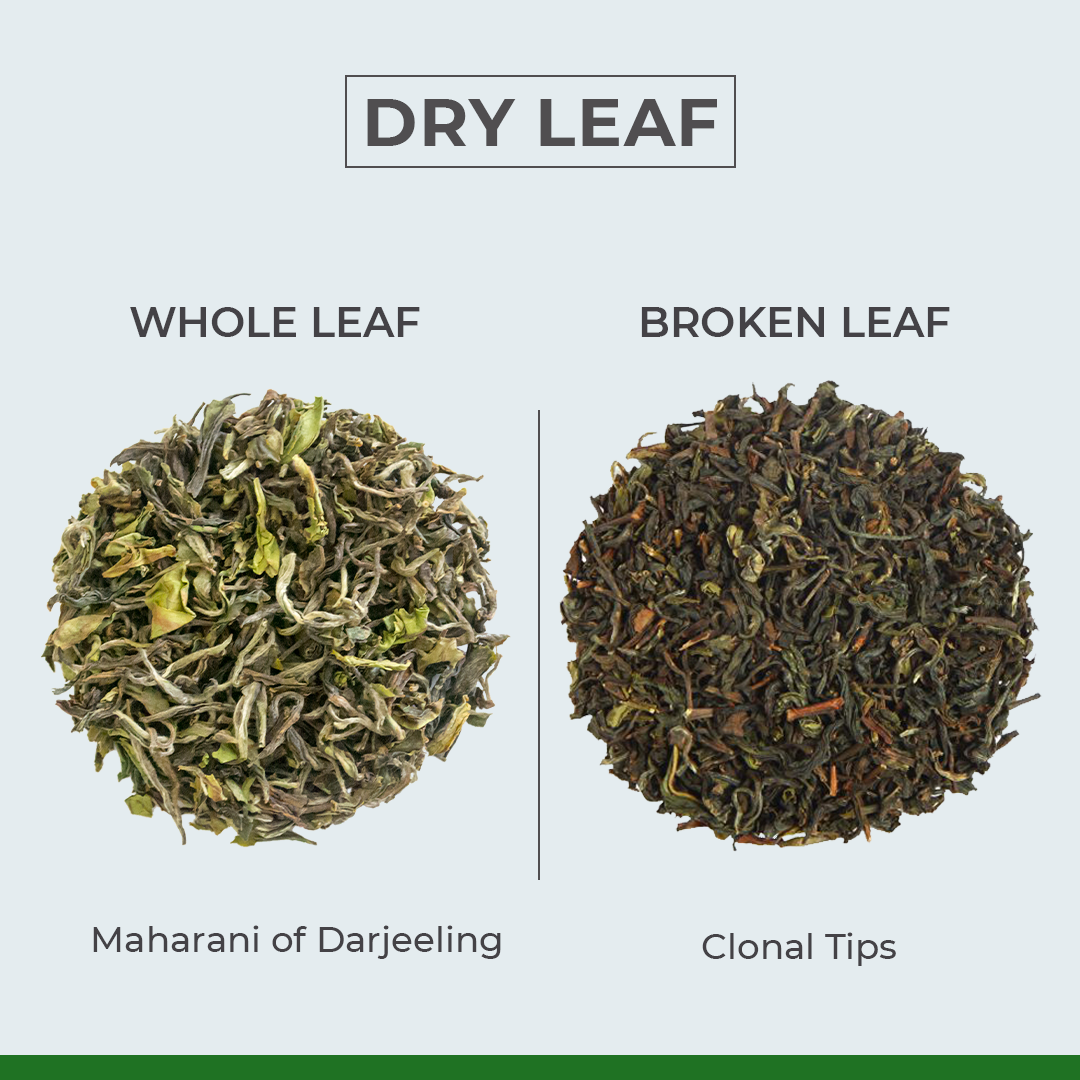Blogs, Universitea
Whole leaf tea – A tea lover’s choice
Whole leaf teas are made up of whole, unbroken tea leaves. It means that the leaves have not been crushed or cut. Often whole leaf teas consist of two leaves and a bud. There are five grades of tea leaves that are produced in Darjeeling- Whole leaf, broken leaf, broken, fannings, and tea dust. Fannings and tea dust are lower grades that are usually used in teabags. Whole leaf teas and leaf teas on the other hand are considered a superior grade. They preserve the flavor of the Camellia Sinensis plant and are altered based on the oxidation process. The length of the oxidation process determines whether it qualifies as white, green, oolong, or black tea.
While there are many that produce broken-leaf tea and fannings, there are a few estates, like Gopaldhara and Rohini, that focus primarily on whole leaf tea and have developed a unique manufacturing style, especially during the peak quality season. Each harvest season (flush) adds certain characteristics to the tea bushes that determine which type of tea will be made out of it. Gopaldhara produces a variety of teas like White tea, Green Tea, Yellow Oolong Tea, Red Oolong Tea, and Black Tea, Lapsang, and Roasted versions.
What makes whole leaf tea unique
Just like wine, whole leaf teas have different flavor profiles and appearances, are highly aromatic with delicate notes, and leave a good aftertaste. When brewed, whole leaf teas expand and unfurl, and slowly release flavor without drawing out bitterness or astringency. While your tea box might contain less amount of whole leaf tea, one serving can be used for multiple infusions with each one resulting in a slightly different flavor note. This truly does make each tea very unique and different from the other.
At Gopaldhara, the tea leaves are plucked by hand and brought to the factory where they are withered. This process is carried out until the leaves keep losing moisture and reducing weight. After which they are rolled carefully on rolling tables, making sure they are just bruised slightly and not broken entirely. The slight bruising is what causes oxidation that gives each tea a unique flavor. This process can take up to several hours to ensure that the leaves stay intact. Once they are dried to remove any remaining moisture, the leaves are hand sorted before they go into the box.



Challenges
Whole leaf tea has notes that are very delicate. The new generation of tea drinkers prefer teas that are very aromatic, highly fruity, flavourful with a great aftertaste. These delicate notes get diluted if the tea is astringent or harsh. To avoid that the teas need to be processed very delicately. We at Gopaldhara are constantly striving to provide the best. We changed our old production process to adapt to this new demand. The rolling tables present at most factories in Darjeeling are very old. The old machinery and rolling tables were removed and replaced with new tables that are delicate and fine. Massaging drums were brought in to oxidize the tea leaves. A whole new process and manufacturing style was developed.
While traditional Darjeelings are packed at 16-18 kgs in a half paper sack, our tea is packed at 7-17 kgs. There’s a difference in this because most companies package tea that is smaller in size, which increases density. Gopaldhara teas on the other hand have whole leaves that are much larger in size and have been hand-sorted to ensure there’s no breakage.
However, the weight of the teas poses a huge challenge when it comes to shipping internationally. Shipping of teas is done in weight or volume. Wholesalers find that the shipping cost for specialty teas are much higher since they require more space for storage but are lighter in weight. The packaging also poses a challenge as a 100 grams box might only be able to fit in 50 grams of tea.
To simplify this process, Gopaldhara decided to go online. You can shop our novelty teas right from the comfort of your home at www.gopaldhara.com
Brewing whole leaf tea
For the perfect cup of Darjeeling tea, weighing your tea is important. For the English brewing method, take around 2 to 2.5 grams of tea for 100 ml of water. For highly aromatic and delicate teas, use water that has been boiled and cooled down a little. Too much heat destroys the flavor of the tea. Pour the water over the tea and let it brew for 3-4 mins with the lid on. Strain into a cup and enjoy! You can brew these teas multiple times. For subsequent brews keep increasing the brewing time by 30 seconds to a minute. Enjoy the teas till the flavor lasts.
Some of the complete whole leaf teas available on the site from 2021 are

